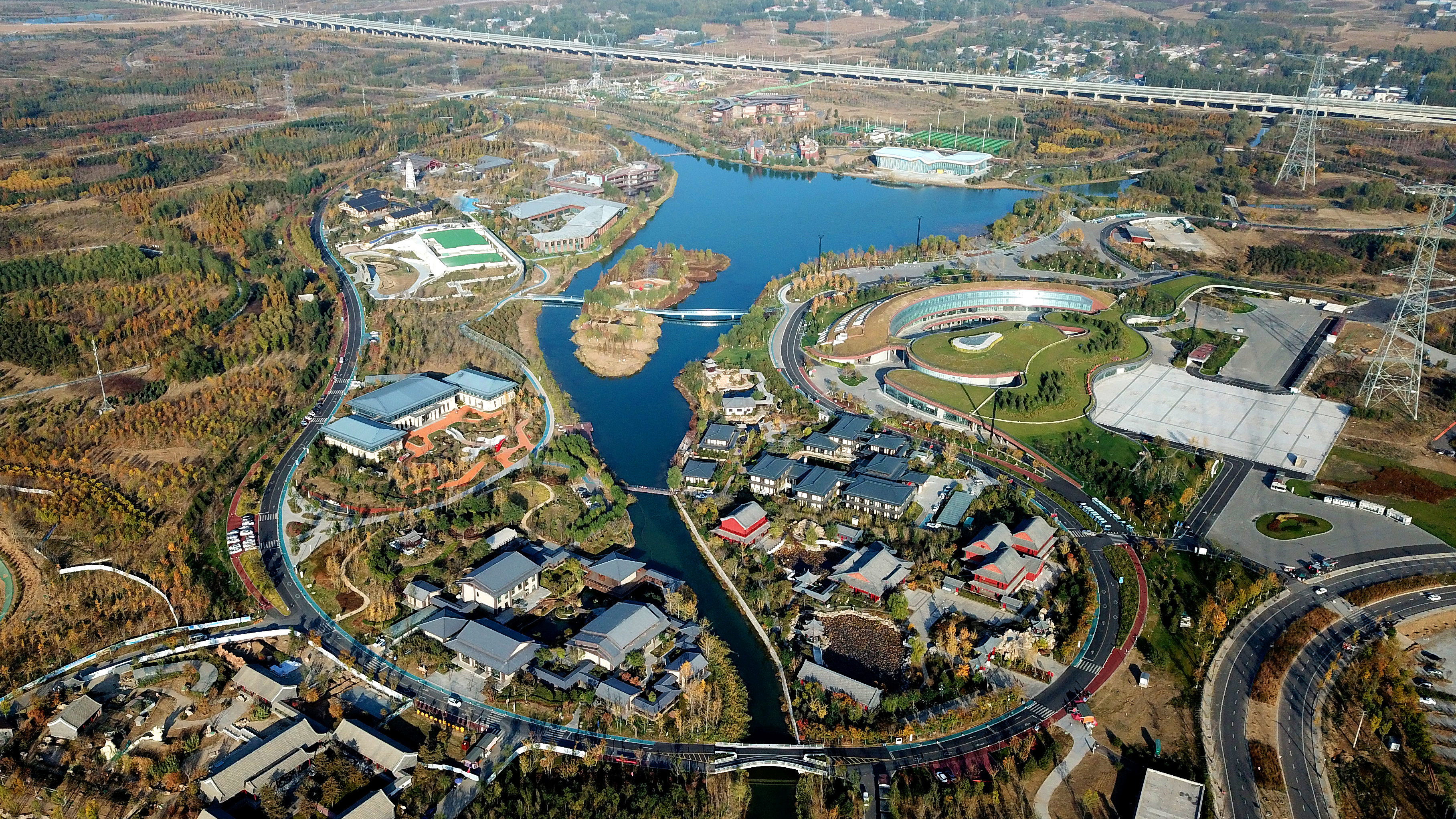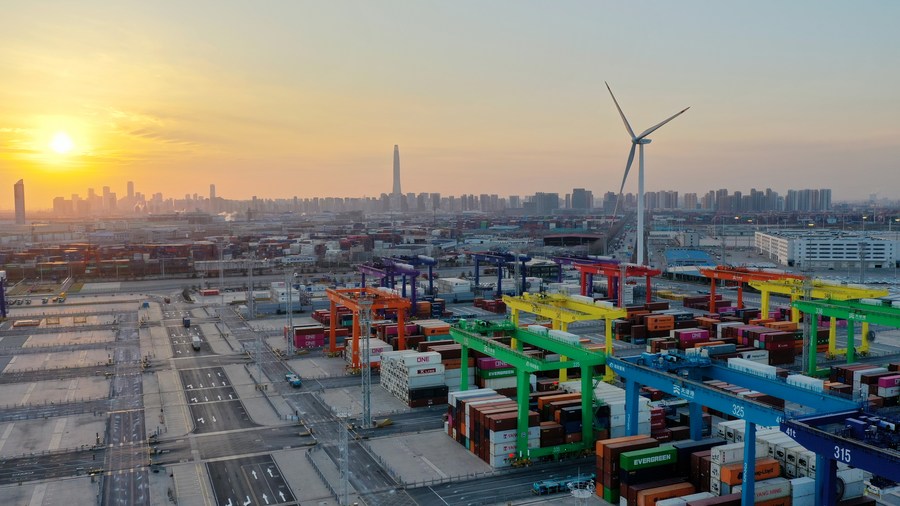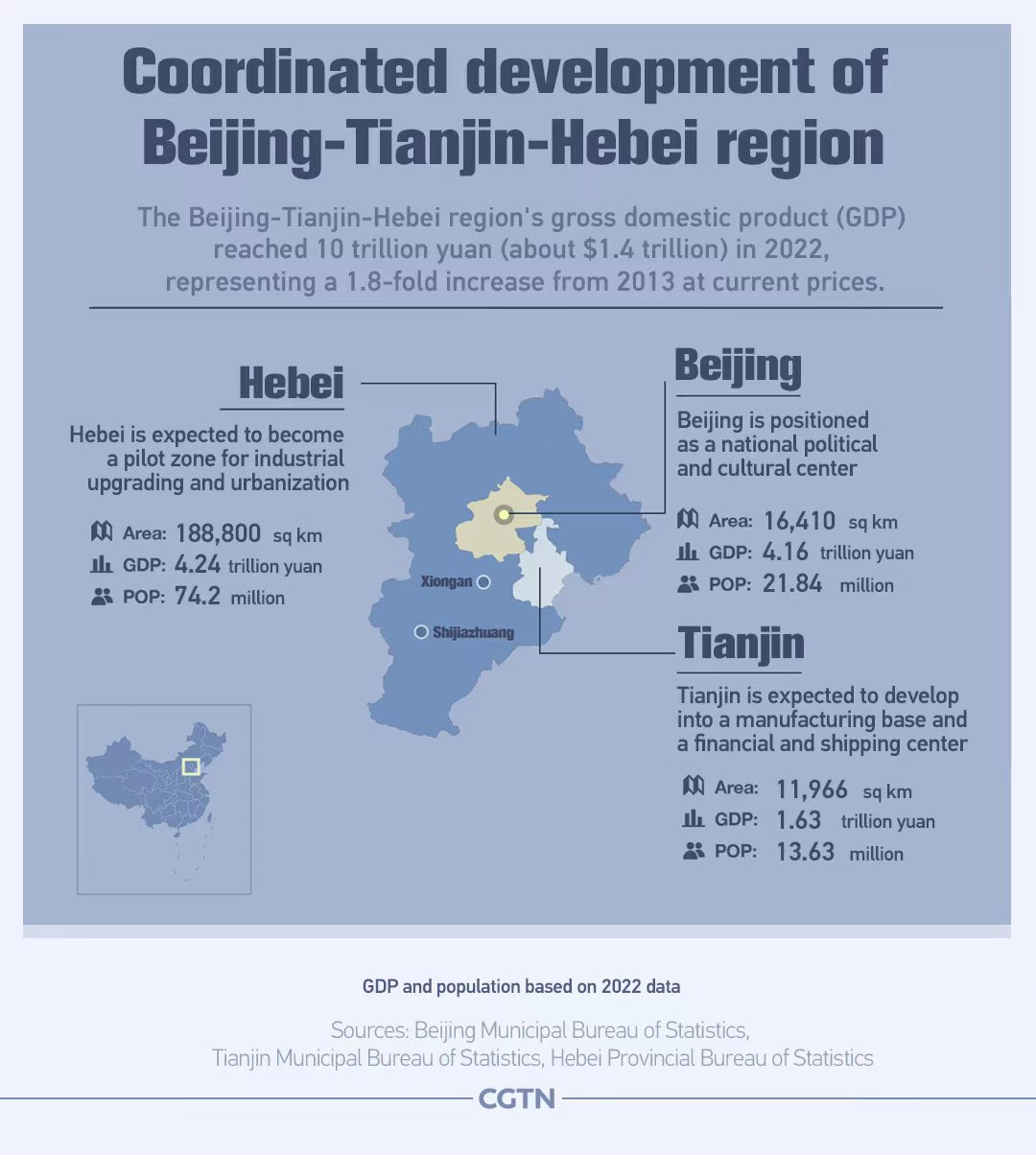
An aerial photo shows the autumn scenery of a park in the Xiongan New Area, north China's Hebei Province, October 31, 2022. /CFP
An aerial photo shows the autumn scenery of a park in the Xiongan New Area, north China's Hebei Province, October 31, 2022. /CFP
About 100 kilometers south of Beijing, a "city of the future" is taking shape on the North China Plain.
Six years after its establishment, the Xiongan New Area in north China's Hebei Province has seen initial fruits in helping Beijing relieve the functions non-essential to its role as the national capital, a key aim of the coordinated development of the Beijing-Tianjin-Hebei region.
During an inspection tour of the area on Wednesday, Chinese President Xi Jinping hailed the construction of the area as a "miracle," noting that the focus has now shifted to high-quality construction, high-level management and high-quality development of the area.
The coordinated development of the Beijing-Tianjin-Hebei region is a national strategy put forward by Xi in February 2014, aiming to achieve better integration and more balanced development in the region. Nine years on, the region's development has seen impressive achievements.

The full Internet of Things container terminal at the Tianjin Port in north China's Tianjin, February 21, 2023. /Xinhua
The full Internet of Things container terminal at the Tianjin Port in north China's Tianjin, February 21, 2023. /Xinhua
Coordinated development
The coordinated development in the region has grown into a new driving force for China's development.
The region's gross domestic product (GDP) reached 10 trillion yuan (about $1.4 trillion) in 2022, representing a 1.8-fold increase from 2013 at current prices, according to a report released by the Beijing Municipal Bureau of Statistics in February.
Moreover, the region embraces innovation-driven development while pushing for a more rational industrial layout and a more balanced resource distribution.
Enterprises from Beijing's Zhongguancun, China's first national high-tech industrial development zone, have set up more than 9,500 branches in Tianjin and Hebei. So far, the total value of technology contracts transferred from Beijing to Tianjin and Hebei has exceeded 210 billion yuan.
Hebei has welcomed some 44,000 enterprises transferred from Beijing and Tianjin, according to the province's development and reform commission. In 2023, Hebei plans to absorb 30 second and third-tier subsidiaries of central State-owned enterprises which are scheduled to settle in Xiongan.
The move not only helped the crowded Chinese capital achieve healthy growth but also brought benefits to Tianjin and Hebei. According to data from the National Bureau of Statistics (NBS), in 2021, the region invested a total of 394.91 billion yuan in research and development, 2.1 times that of 2013, accounting for 14.1 percent of the national total.
Transfer centers across the region have jointly built platforms to facilitate the collaborative commercialization of scientific and technological achievements.
The integration of the whole region has also been shown in its upgraded transportation. A "one-hour traffic circle" has been built to link Beijing and Tianjin municipalities, as well as cities in Hebei, facilitating residents' work and lives.

People-centered development
Coordinated development has also improved people's livelihood in the region, promoting the balanced allocation of quality public services, such as medical and educational resources.
The National Health Commission has further improved the mechanism for mutual recognition and sharing of clinical test results among medical institutions in the Beijing-Tianjin-Hebei region. Currently, 685 medical institutions in the region mutually recognize 50 items of test results.
In 2015, Beijing Children's Hospital started assisting the children's hospital in Baoding, a city in Hebei, providing professional medical workers and technical support. Since then, more than 8,000 medical experts from Beijing have served at Baoding Children's Hospital, passing on their experience and training to local medical professionals.
Apart from medical cooperation, 22 alliances for university development have been established in the region, aiming to balance educational resources and provide equitable opportunities for students.
Beijing and Hebei have deepened educational cooperation, following the "3+2" model – three years of training in secondary vocational schools in Hebei and two years in higher vocational schools in Beijing. In 2022, six vocational schools in Beijing and Tianjin recruited more than 3,000 students in Hebei, an increase of 50 percent over the previous year.